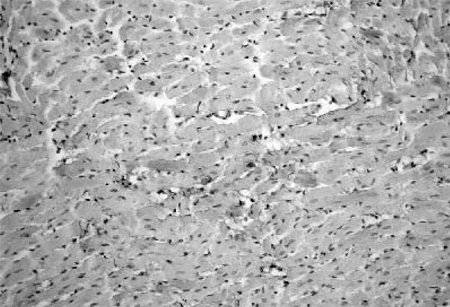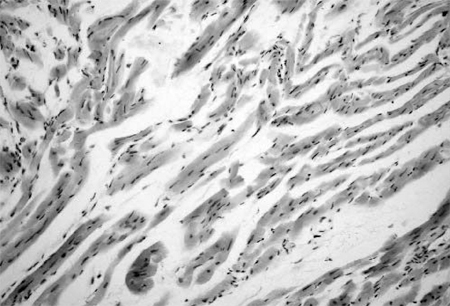Yonsei Med J.
2008 Oct;49(5):735-741. 10.3349/ymj.2008.49.5.735.
The Effect of High Dose Melatonin on Cardiac Ischemia-reperfusion Injury
- Affiliations
-
- 1Department of Cardiovascular Surgery, Erciyes University Medical Faculty, Kayseri, Turkey. ceyranh@erciyes.edu.tr
- 2Department of Biochemistry, Erciyes University Medical Faculty, Kayseri, Turkey.
- 3Department of Pediatric Cardiology, Erciyes University Medical Faculty, Kayseri, Turkey.
- 4Department of Pathology, Erciyes University Medical Faculty, Kayseri, Turkey.
- 5Pathologist of National Hospital, Kayseri, Turkey.
- KMID: 2158191
- DOI: http://doi.org/10.3349/ymj.2008.49.5.735
Abstract
- PURPOSE
Melatonin, the most potent scavenger of toxic free radicals, has been found to be effective in protecting against pathological states due to the release of reactive oxygen species. This study was performed to establish the effect of high dose melatonin on protection against ischemia- reperfusion (I/R) injury in rat hearts. MATERIALS AND METHODS: Forty male Sprague-Dawley rats were used in this study. They were separated into four groups of ten rats each. A left coronary artery occlusion was induced in the rats by ligating the artery for 20 minutes and then releasing the ligation (reperfusion) afterwards. The control group was Group A. Group B was subjected to myocardial ischemia-reperfusion without any treatment, while Group C underwent myocardial ischemia-reperfusion with a melatonin treatment before the ischemia. Group D was subjected to myocardial ischemia-reperfusion with a melatonin treatment before the reperfusion. After 20 minutes of reperfusion, blood samples were obtained from each group for biochemical studies, and the animals were sacrificed for histological and, immunohistochemical examinations of the myocardial tissue. RESULTS: We found that the cardiac troponin T(cTn-T) levels were significantly increased in Group B when all groups were compared. In the Group C rats treated with melatonin, the cTn-T values were significantly lower than those in Groups B and D. In addition, malondialdehyde (MDA) and antioxidant enzymes including, superoxide dismutase (SOD) and myeloperoxidase (MPO) were lower than those in Group B in the melatonin treated groups. The differences were statistically significant (p < 0.05). Histopathologic and immunohistopathologic studies also supported the effectiveness of melatonin. CONCLUSION: Our study suggests that high dose melatonin, appears to offer protection against cardiac ischemia-reperfusion injuries in rats by scavenging the free radicals and could have a potential clinical use in the management of myocardial ischemia.
MeSH Terms
Figure
Reference
-
1. Hearse DJ, Bolli R. Reperfusion induced injury: manifestations, mechanisms, and clinical relevance. Cardiovasc Res. 1992. 26:101–108.
Article2. Yue TL, Ma XL, Wang X, Romanic AM, Liu GL, Louden C, et al. Possible involvement of stress-activated protein kinase signaling pathway and Fas receptor expression in prevention of ischemia/reperfusion-induced cardiomyocyte apoptosis by carvedilol. Circ Res. 1998. 82:166–174.
Article3. Kaneko S, Okumura K, Numaguchi Y, Matsui H, Murase K, Mokuno S, et al. Melatonin scavenges hydroxyl radical and protects isolated rat hearts from ischemic reperfusion injury. Life Sci. 2000. 67:101–112.
Article4. Tan DX, Chen LD, Poeggeler B, Manchester LC, Reiter RJ. Melatonin: a potent, endogenous hydroxyl radical scavenger. Endocr J. 1993. 1:57–60.5. Reiter RJ, Poeggeler B, Tan DX, Chen LD, Manchester LC, Cuerrero JM. Antioxidant capacity of melatonin: a novel action not requiring receptor. Neuro Endocrinol Lett. 1993. 15:103–116.6. Fjaerli O, Lund T, Osterud B. The effect of melatonin on cellular activation processes in human blood. J Pineal Res. 1999. 26:50–55.
Article7. Hearse DJ, Tosaki A. Reperfusion-induced arrhythmias and free radicals: studies in the rat heart with DMPO. J Cardiovasc Pharmacol. 1987. 9:641–650.8. Jeremias I, Kupatt C, Martin-Villalba A, Habazettl H, Schenkel J, Boekstegers P, et al. Involvement of CD95/Apo1/Fas in cell death after myocardial ischemia. Circulation. 2000. 102:915–920.
Article9. Salie R, Harper I, Cillie C, Genade S, Huisamen B, Moolman J, et al. Melatonin protects against ischaemic-reperfusion myocardial damage. J Mol Cell Cardiol. 2001. 33:343–357.
Article10. Basaga HS. Biochemical aspects of free radicals. Biochem Cell Biol. 1990. 68:989–998.
Article11. Rodríguez AB, Nogales G, Ortega E, Barriga C. Melatonin controls superoxide anion level: Modulation of superoxide dismutase activity in ring dove heterophils. J Pineal Res. 1998. 24:9–14.
Article12. Cuzzocrea S, Costantino G, Mazzon E, Micali A, De Sarro A, Caputi AP. Beneficial effects of melatonin in a rat model of splanchnic artery occlusion and reperfusion. J Pineal Res. 2000. 28:52–63.
Article13. Haider KH, Stimson WH. Cardiac myofibrillar proteins: biochemical markers to estimate myocardial injury. Mol Cell Biochem. 1999. 194:31–39.14. Ohno M, Takemura G, Ohno A, Misao J, Hayakawa Y, Minatoguchi S, et al. "Apoptotic" myocytes in infarct area in rabbit hearts may be oncotic myocytes with DNA fragmentation: analysis by immunogold electron microscopy combined with in situ nick end-labeling. Circulation. 1998. 98:1422–1430.
Article15. Reiter R, Tang L, Garcia JJ, Muñoz-Hoyos A. Pharmacological actions of melatonin in oxygen radical pathophysiology. Life Sci. 1997. 60:2255–2271.
Article16. Ianăs O, Olinescu R, Bădescu I. Melatonin involvement in oxidative processes. Endocrinologie. 1991. 29:147–153.17. Sainz RM, Mayo JC, Uría H, Kotler M, Antolín I, Rodriguez C, et al. The pineal neurohormone melatonin prevents in vivo and in vitro apoptosis in thymocytes. J Pineal Res. 1995. 19:178–188.
Article18. Bettahi I, Pozo D, Osuna C, Reiter RJ, Acuña-Castroviejo D, Guerrero JM. Melatonin reduces nitric oxide synthase activity in rat hypothalamus. J Pineal Res. 1996. 20:205–210.
Article19. Szárszoi O, Asemu G, Vanecek J, Ost'ádal B, Kolár F. Effects of melatonin on ischemia and reperfusion injury of the rat heart. Cardiovasc Drugs Ther. 2001. 15:251–257.20. Bolli R. Oxygen-derived free radicals and myocardial reperfusion injury: an overview. Cardiovasc Drugs Ther. 1991. 5:Suppl 2. 249–268.
Article21. Pieri C, Marra M, Moroni F, Recchioni R, Marcheselli F. Melatonin: a peroxyl radical scavenger more effective than vitamin E. Life Sci. 1994. 55:PL271–PL276.
Article22. Sewerynek E, Reiter RJ, Melchiorri D, Ortiz GG, Lewinski A. Oxidative damage in the liver induced by ischemia-reperfusion: protection by melatonin. Hepatogastroenterology. 1996. 43:898–905.23. Inci I, Inci D, Dutly A, Boehler A, Weder W. Melatonin attenuates posttransplant lung ischemia-reperfusion injury. Ann Thorac Surg. 2000. 73:220–225.
Article24. Kazez A, Demirbağ M, Ustündağ B, Ozercan IH, Sağlam M. The role of melatonin in prevention of intestinal ischemia-reperfusion injury in rats. J Pediatr Surg. 2000. 35:1444–1448.
Article25. Wakatsuki A, Okatani Y, Izumiya C, Ikenoue N. Melatonin protects against ischemia and reperfusion-induced oxidative lipid and DNA damage in fetal rat brain. J Pineal Res. 1999. 26:147–152.
Article
- Full Text Links
- Actions
-
Cited
- CITED
-
- Close
- Share
- Similar articles
-
- The Effect of Melatonin on Biochemical Changes after Ischemia-Reperfusion Injury of Rat Skeletal Muscle
- Anti-arrhythmic Effect of Melatonin in Reperfusion-induced Arrhythmia
- Effect of Melatonin on Expression of c-Jun Proteins and BDNF mRNA in Transient Global Ischemia-Reperfusion Injury of Rat Brain
- The Effect of Melatonin on Morphological Changes of Rat Skeletal Muscle after Ischemia-Reperfusion Injury
- Effect of Melatonin during Recovery of Tissue Injury after Intestine Ischemia-Reperfusion





